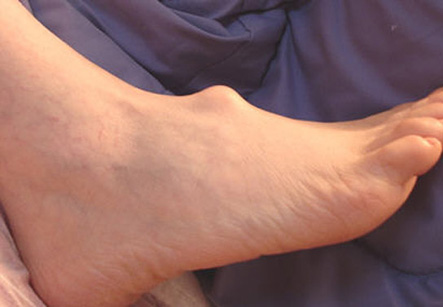Bony Foot Deformity
Introduction
Bony foot deformities are variety of conditions which affects the bones, tendons and muscles of feet. Some deformities are present since birth called as congenital foot deformities which present in childhood itself. Some deformities are acquired later in life and therefore present in adulthood.
The treatment of foot deformities varies greatly in children as it is important to preserve the integrity of growth plate of the bone to allow continuous growth and development of the foot. Whereas, in adults the surgeon or doctor is more concerned about relief of symptoms and improving the quality of life.
The bone deformities can be classified in various ways. But depending on the mode of acquisition of deformity they can be acquired or congenital (since birth).
Acquired foot deformities:
Acquired deformities may have several causes:
1. Injury to the joint surfaces in the foot.
2. Injury to growth plate.
We have all the information you need about public and private clinics and hospitals that provide Podiatry-Chiropody treatments in Iran, Islamic Republic Of with the best quality and lowest possible prices

3. Mal-union of fractures.
4. Neuromuscular disorders like muscular dystrophies, Charcot-Marie Tooth disease, tethered cord, spasticity
5. Infection or tumors.
Congenital foot deformities:
Congenital deformities of the foot can present in any age — from infancy to adolescence. These deformities include:
1. Club foot-Clubfoot is one of the most common major birth defects. It affects the foot and ankle causing a twist of heel and toes inward. In this condition, the top of the foot looks like it is the bottom. The clubfoot, calf and leg are smaller and shorter than normal children. Otherwise, there are no other health problems.
2. Hooked foot-also called as metatarsus adductus, metatarsus varus, metatarsus adductovarus, or SKEW foot. The foot is twisted inward with respect to the heel.
3. Flatfoot- also called as pesplanus or pes valgus. In this case, the arches of foot are absent. There are several forms of flatfoot which include:
• Flexible flatfoot
• Flexible flatfoot associated with tight Achiles tendon
• Tarsal coalition- in this deformity, there is failure of development of foot or heel joints.
• Peroneal spastic flatfoot
• Calcaneovalgus foot-In this case; the foot is sharply angled upwards at the heel. Sometimes, the top of the foot touches the shin.
• Accessory navicular-In this condition, the navicular bone situated in the center of the foot collapses causing flattening of arch.
• Vertical talus- a severe type of flat foot.
4. Hallux valgus- this deformity causes overlapping of great toe over the second toe.
5. Bunions- These are abnormal enlargements of the joint at the base of the great toe.
6. Toe deformities: these are mainly concerned with toes.
• Hammer toes- this deformity causes the toe’s joints to twist, cocking the toe upward.
• Mallet toe- the distal toe joint buckles in this deformity.
• Claw toe- A deformity causing abnormal positions of all three joints of the toe.
• Polydactyly- An extra toe or toes are present.
• Complex cross fusion (APERTS Syndrome)-rare deformity causing a syndactyly (fusion) of the toes.
• Short toes from birth.
7. Trevor’s syndrome: – in this case, there is overgrowth of the cartilage on the end of one or more tarsal bones of foot.
8. Haglund’s deformity- This is a condition of heel bone.
9. Osteochondrosisdissecans- this affects the bone formation in the epiphysis of the growing bones. It includes following conditions:
• Kohler’s disease- in this disease, the navicular bone of foot loses its blood supply.
• Freiberg’s disease- the second metatarsal bone loses its blood circulation and dies.
10. Cavus foot- This is a high arched foot.
11. Growth defects
12. Imbalance of muscles causing deformities in foot.
Treatment options:
Treatment of the foot deformities depend on complete expert evaluation of the condition including family history, previous medical history, various lab tests, blood tests and investigations like X-ray, CT scan, MRI scan, neurological and muscle function tests. It also depends on surgeon’s skill and ability to foresee the effects of surgery. Appropriate physiotherapy is equally important after surgical as well as non-surgical modalities for the final outcome of the procedures. The aim of the therapy is to render the foot functional, painless and stable.
Non-surgical approaches include
1. Treatment of the cause if feasible.
2. Casting and repetitive casting of foot in plaster mold.
3. Stretching the foot to correct position with casting.
4. Special shoes and braces to hold the foot in place.
5. Extensive physiotherapy.
The muscles try to maintain the foot in position. But when all these treatments fail, surgery is needed. They include:
1. Soft tissue reconstruction
2. Tendon and ligament reconstruction
3. Bone correction
4. Ilizarov technique- in this method, the foot is maintained into correction by means of external metal fixators anchored around the deformed joint or bones. The fixators pass through the bones.